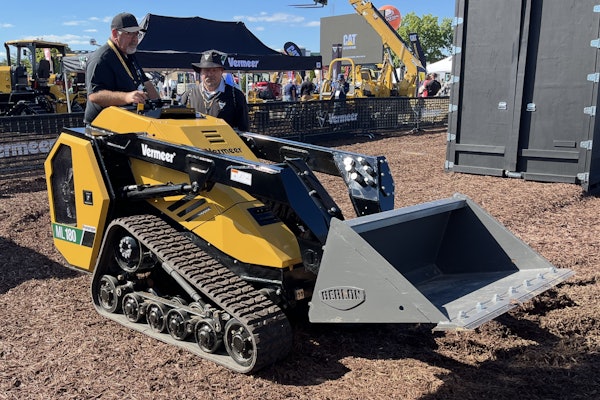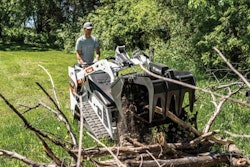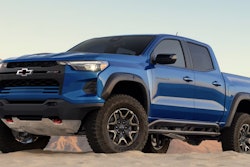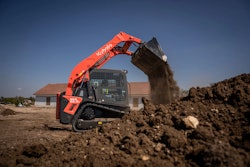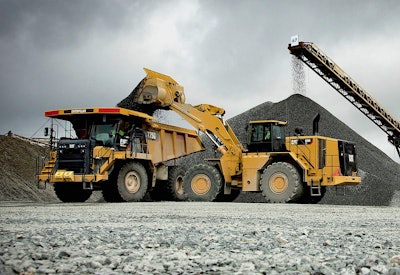
Cat 3Q18 Highlights
- Costs rising due to tariffs, materials, freight
- Best third-quarter profit per share in company history
- Third-quarter sales and revenues up 18 percent
- Sales and revenues for the first nine months of 2018 up 24%
The impact of recently imposed metal tariffs added up to $40 million in the third quarter of 2018 for Caterpillar, which has notified dealers it will be raising prices as it faces higher costs.
And for all of 2018, Cat expects the tariffs’ impact will be at the low end of the previously provided range of $100 million to $200 million, the company said in its third-quarter earnings report Tuesday.
Caterpillar isn’t alone in grappling with supply challenges, as prices for hot-rolled steel and other supplies jump due to the steel and aluminum tariffs, now in their seventh month.
“Material costs were higher primarily due to increases in steel prices and tariffs,” the report says. “Freight costs were unfavorable primarily due to supply chain inefficiencies as the industry continues to respond to strong global demand. Selling, general and administrative and research and development expenses increased primarily due to investments aligned with the company’s strategic growth initiatives.”
Despite cost increases, the company’s higher sales and “strong operational performance” have led to sales and revenues up 18 percent in the third quarter, stoking record-setting profit per share, Cat says.
Third-quarter 2018 sales and revenues climbed to $13.5 billion – up from $11.4 billion in the third quarter of 2017.
Stocks sank Tuesday on news of the higher costs, even though 3Q 2018 profit per share sailed to $2.88. That is up from $1.77 in the third quarter of 2017.
“This was the best third-quarter profit per share in our company’s history,” says Caterpillar CEO Jim Umpleby. “Our global team continues to do excellent work focusing on our customers’ success and executing our strategy for profitable growth.”
Excluding restructuring costs and a net tax benefit to adjust deferred tax balances, adjusted profit per share in the third quarter of 2018 was $2.86. That compares to a third-quarter 2017 adjusted profit per share of $1.95.
Caterpillar’s global workforce increased about 8,200 from the end of the third quarter of 2017, primarily due to the higher production volumes.
End-user demand strong, inventories quadrupled
Dealer machine and engine inventories increased about $800 million during the third quarter of 2018, compared to an increase of about $200 million during the third quarter of 2017, Cat says.
“The favorable change impacted sales for the three primary segments about equally. During the first nine months of 2018, dealer machine and engine inventories increased about $2.1 billion, compared to an increase of about $100 million during the first nine months of 2017. We believe the increase in dealer inventories is reflective of current end-user demand,” the company says.
Caterpillar also offered changes to order backlog by each segment. At the end of the third quarter of 2018, the order backlog was $17.3 billion. That’s about $400 million lower than the second quarter of 2018 with decreases across the three primary segments.
Construction Industries’ total sales were $5.683 billion in the third quarter of 2018, compared with $4.9 billion in the third quarter of 2017. The increase was mostly due to higher sales volume for construction equipment. Sales increased in all regions except Latin America.
In North America, the increase was due mostly to higher demand for new equipment, primarily to support oil and gas activities, including pipelines, and non-residential building construction activities, too.
Construction Industries’ profit was $1.058 billion in the third quarter of 2018, compared with $884 million in the third quarter of 2017. The increase in profit was a result of higher sales volume, partially offset by higher manufacturing costs.
Resource Industries’ total sales were $2.63 billion in the third quarter of 2018, an increase of $682 million from the third quarter of 2017. The increase was primarily due to higher demand for both mining and heavy construction equipment. Commodity market fundamentals remained positive, contributing to higher mining equipment sales.
In addition, increased sales to heavy construction and quarry and aggregate customers were driven by positive global economic growth, Caterpillar says. Resource Industries’ customers globally continue to focus on improving the productivity and efficiency of existing machine assets, thereby extending equipment life cycles and lowering operating costs, the company says.
“Rebuild, overhaul and maintenance activity remains strong, resulting in higher aftermarket parts sales. Favorable price realization also contributed to the sales improvement. Resource Industries’ profit was $414 million in the third quarter of 2018, compared with $229 million in the third quarter of 2017,” the report says.
Energy and Transportation’s total sales were $5.55 billion in the third quarter of 2018, compared with $4.838 billion in the third quarter of 2017.
The increase was primarily due to higher sales volume across all applications except industrial. Oil and gas sales increased due to higher demand in North America for well servicing and gas compression applications, the numbers show.
Higher energy prices and growth in U.S. onshore oil and gas drove increased sales for reciprocating engines.
Power Generation sales improved across all regions, with the largest increases in North America and Asia/Pacific primarily for reciprocating engine applications, including data centers and power plants, and for aftermarket parts.
Industrial sales were lower in Europe, Asia and the Middle East, primarily due to economic uncertainty in a few countries in the Middle East, partially offset by slightly higher sales in Asia/Pacific and North America.
Transportation sales were higher primarily due to rail services, driven by acquisitions in Asia/Pacific and EAME, and increased rail traffic in North America. Energy and Transportation’s profit was $973 million in the third quarter of 2018, compared with $743 million in the third quarter of 2017.
More digital services in autonomy, automation
“We continue to deploy more digital service offerings in autonomy and automation technology for mining,” Umpleby says.
“We’re collaborating with a gold-mining customer in Nevada supported by our local CAT dealer to automate underground loaders and enable machine operators to work safely and efficiently from a control room on the surface. We’re improving existing technology and accelerating deployment of new features.”
Cat is also working with a mining customer in Western Australia on the first commercial installation of a retrofit kit to enable autonomous operation of competitor mining trucks using Cat MineStar command for hauling.
“With this Cat system customers can operate different brands and sizes of trucks, both manned and autonomous in the same space and scale up fleet size to meet the mines’ needs,” Umpleby says.
2018 Outlook
The company’s 2018 profit per share outlook is a range of $10.65 to $11.65. The company is maintaining the adjusted profit per share outlook range of $11 to $12.
The current profit per share outlook now includes a net tax benefit of $95 million that was recorded in the third quarter of 2018 to adjust deferred tax balances. The outlook for adjusted profit per share excludes restructuring costs of about $400 million and the net tax benefit.
Most end markets continue to improve. Order rates and backlog remain healthy. In the fourth quarter, price realization, operational excellence and cost discipline are expected to more than offset higher material and freight costs, including tariffs, Caterpillar says.




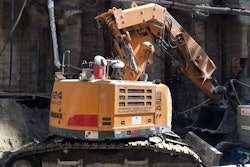
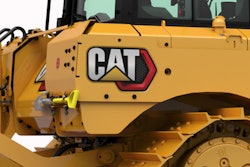
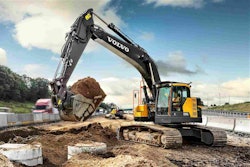
![KEC Elko facility rendering[1]](https://img.equipmentworld.com/files/base/randallreilly/all/image/2018/10/eqw.KEC-Elko-facility-rendering1-e1539963884855.png?auto=format%2Ccompress&fit=crop&h=167&q=70&w=250)

